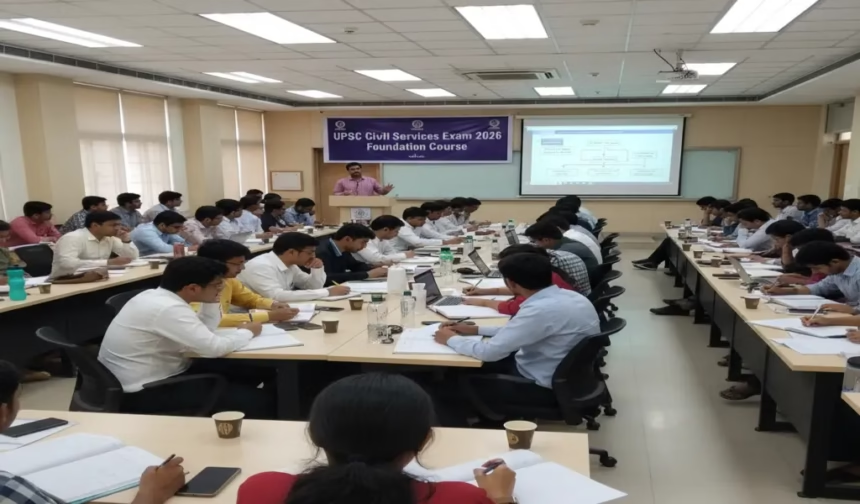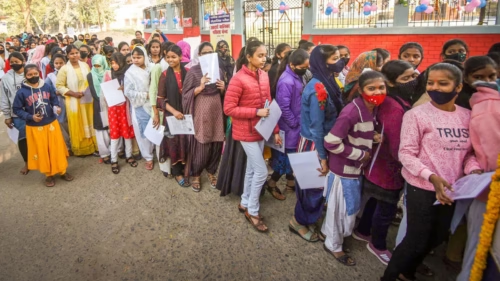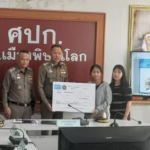- UPSC 2026 Dates, Notification, and Exam Timeline
- UPSC 2026 key dates at a glance
- Admit cards, exam centers, and exam day rules.
- Results, interview window, and cut-off trends
- UPSC 2026 Syllabus, Exam Pattern, and Eligibility
- Prelims syllabus summary (GS I and CSAT)
- Mains syllabus summary (GS I–IV, Essay, Language, Optional)
- Exam pattern and marking scheme
- Eligibility checklist (age, attempts, degree, nationality)
- Optional subject selection: criteria and sources
- UPSC 2026 Application Process and Documents
- One-Time Registration and Application Steps
- Documents, photo/signature specs, and fees
- Mistakes to avoid and the correction window
- Admit cards and exam center selection
- FAQs: Dates, qualification, syllabus, starting prep
- Q: What is the date of UPSC Prelims 2026?
- Q: What is the qualification for UPSC 2026?
- Q: What is the syllabus for the UPSC exam 2026?
- Q: How to start preparation for UPSC 2026?
- UPSC 2026 Preparation and Interview Strategy
- 12-month, 9-month, and 6-month study plans
- Quick booklist and daily notes routine
- CSAT strategy for non-math students
- Strategy for working professionals
- Interview (Personality Test): DAF, mocks, dress, stress handling
- Conclusion
UPSC 2026 guide with dates, syllabus, eligibility, application steps, and a study plan. Start early with official links and smart prep.
Preparing for UPSC 2026 starts with clarity. The Civil Services Examination selects candidates for IAS, IPS, IFS, and other central services. It runs in three stages — Prelims, Mains, and the Personality Test — across a single long cycle.
The 2026 cycle follows the UPSC Exam Calendar 2026. Some items are confirmed in the annual calendar, and a few are marked tentative or TBA. This guide covers dates, syllabus, eligibility, application steps, study plans, interview tips, results, and quick FAQs.
Action steps: check the official notification when released, start One Time Registration, and bookmark the exam calendar. Use only trusted links: the UPSC Official Website, the UPSC Exam Calendar, and the UPSC Online Application.
UPSC 2026 Dates, Notification, and Exam Timeline
Dates drive planning, so pin them early. The UPSC Annual Calendar lists key milestones. For 2026, Prelims and Mains dates are on the calendar. Interview and final results follow typical windows.
Verify every update on the UPSC Exam Calendar, the UPSC Official Website, and the application portal at UPSC Online Application.
UPSC 2026 key dates at a glance
| Stage | Date or Window | Status | Source |
|---|---|---|---|
| Notification | Jan 14, 2026 | Calendar | UPSC Exam Calendar |
| Application window | Jan 14 to Feb 3, 2026 | Calendar | UPSC Exam Calendar |
| Prelims (GS + CSAT) | May 24, 2026 (Sunday) | Calendar | UPSC Exam Calendar |
| Mains (starts) | Aug 21, 2026, 5 days | Calendar | UPSC Exam Calendar |
| Admit cards (Prelims) | About 2–3 weeks before the exam | Tentative | UPSC website updates |
| Prelims result | Late Jun or early Jul 2026 | Tentative | Past 3 years pattern |
| Mains result | Oct 2026 | Tentative | Past 3 years pattern |
| Interview (Personality Test) | Late Oct to Nov 2026 | TBA by UPSC | UPSC website updates |
| Final result | Nov to Dec 2026 | Tentative | Past 3 years pattern |
Basis: UPSC 2026 Annual Calendar plus last 3 years’ patterns. Always confirm on the UPSC Official Website.
Admit cards, exam centers, and exam day rules.
- Admit cards: download from the UPSC website, usually 2-3 weeks before the exam.
- Exam centers: choose during the application. Popular cities fill early.
- Reporting: reach before gate closure. Late entry is not allowed.
- What to carry: admit card printout, valid photo ID, black ballpoint pen.
- What not to carry: electronic devices, smart watches, and study material.
- CSAT note: It is qualifying at 33 percent, but skipping practice is risky.
- Always read the instructions on your admit card.
Results, interview window, and cut-off trends
- Results: PDFs appear on the UPSC website, each with a roll number. Name-wise lists are not typical for stage-wise results.
- Marksheets: released after the cycle ends. Save your PDFs.
- Cut-off: changes every year. It depends on the difficulty of the paper, vacancies, and normalization in Prelims. Check the last 3 years to get a range, not a fixed number.
- Keep a folder with the result PDFs and scorecards once they are released.
UPSC 2026 Syllabus, Exam Pattern, and Eligibility
UPSC tests knowledge, clarity of thought, and judgment. Prelims screens with objective papers, GS I, and CSAT. Mains tests depth with nine descriptive papers. The Personality Test assesses awareness and attitude. Read the official syllabi once, then revisit by topic—official page: UPSC Syllabi.
Recent trends: more map-based geography, applied economy questions, ethics caselets, and frequent data use in GS answers.
Prelims syllabus summary (GS I and CSAT)
- GS I
- History and culture, including modern India and art.
- Geography and environment, with maps and biomes.
- Polity and governance, rights, constitutional bodies.
- Economy, budgeting basics, sectors, and schemes.
- Science and tech basics, space and biotech.
- Current events across all themes.
- CSAT
- Reading comprehension.
- Basic numeracy and arithmetic.
- Data interpretation.
- Reasoning and decision making.
- Marking rules
- Negative marking applies in both papers.
- CSAT is qualifying at 33 percent.
- Prelims cut-off is based on GS I only.
Mains syllabus summary (GS I–IV, Essay, Language, Optional)
- Essay: two essays on abstract, social, or policy themes.
- GS I: history, culture, society, geography of India and the world.
- GS II: polity, governance, social justice, international relations.
- GS III: economy, agriculture, environment, science, internal Security.
- GS IV: ethics, integrity, aptitude; case studies and theory.
- Compulsory Indian Language and English: qualifying papers.
- Optional Subject Papers I and II: one subject from the list, two papers.
- Read the official PDF in full before making notes. Consider a simple two-column visual later, Prelims vs Mains overview.
Exam pattern and marking scheme
- Prelims: two objective papers on one day. 1/3rd negative marking for wrong answers.
- Mains: nine descriptive papers over about five days. Includes Essay, four GS papers, two Optional papers, and two qualifying language papers.
- Interview: usually 25-40 minutes. Focus on clarity, balance, and awareness.
- Language options: English or Hindi for the interview. The main language follows your choice on the form.
- Optional matters. It carries high weight in Mains.
Eligibility checklist (age, attempts, degree, nationality)
- Degree: a bachelor’s degree from a recognized university. Final-year students can apply if they can prove eligibility by the deadline.
- Age: 21 years on 1 August 2026. Upper age varies by category as per UPSC rules.
- Attempts: the general category usually allows 6 attempts; relaxations apply to other categories.
- Nationality: Indian citizenship is required for IAS and IPS. Other services have detailed rules; check the notification.
- Certificates: valid OBC, EWS, SC, ST, and PwBD certificates if claiming reservation.
- Keep documents current. Names and dates must match.
Optional subject selection: criteria and sources
- Interest and background: pick what you can read daily without burnout.
- Overlap with GS: subjects such as Polity, History, Sociology, and Anthropology often help.
- Standard books: confirm availability of one core text and one problem-solving source.
- PYQ analysis: Read the last 3 to 5 years before finalizing your subject.
- Test series: choose one trusted program and commit.
- Popular optional examples and sources:
- Polity: Laxmikanth plus PYQs, one test series.
- Sociology: one standard book set, toppers’ PYQ analysis.
- Geography: GC Leong for basics, one atlas, PYQs.
- Start with a two-week trial study of two subjects, then decide.
UPSC 2026 Application Process and Documents
The whole process runs on the UPSC portals. Start with One Time Registration, then complete the application form when the window opens. Track updates on UPSC Online Application and cross-check on the UPSC Official Website.
One-Time Registration and Application Steps
- Create an OTR account on the UPSC portal.
- Verify email and mobile. Save your OTR number.
- Fill in the basic details, upload a photo, and sign.
- During the application window, log in and select Civil Services Examination.
- Complete the form, pick exam centers, pay fees, and submit.
- Download and store the application PDF and payment proof.
- Keep the same mobile number and email address active throughout the cycle.
Documents, photo/signature specs, and fees
- Documents
- Photo ID, degree details, category or EWS certificate if applicable, and disability certificate if applicable.
- Photo specs
- Recent colour photo, plain background, clear face, no heavy shadows.
- Follow the UPSC size and dimension rules in the notification. Do not use SSC presets.
- Signature
- Dark ink on white paper, scanned and cropped as per size guidelines.
- Fees
- Follow the fee in the notification. Some categories are exempt.
- Always read the 2026 notification PDF for exact specs.
Mistakes to avoid and the correction window
- Wrong category claim or outdated certificate.
- Filling centers late, popular cities may be gone.
- Photo or signature not matching size and clarity rules.
- Skipping OTR or creating multiple forms.
- Choosing an option without checking PYQs.
- Mismatch between documents and entries.
- Submit early. Payment failures and server load can block last-minute attempts.
- Corrections: depend on the 2026 notice. Opportunities, if any, are limited.
Admit cards and exam center selection
- Apply early to secure your preferred city.
- After the issue, verify your name, photo, center, and timings.
- Print two copies and save the PDF in cloud storage.
- Carry the original ID that matches your form, and a backup ID if possible.
FAQs: Dates, qualification, syllabus, starting prep
Q: What is the date of UPSC Prelims 2026?
A: 24 May 2026, per the UPSC Exam Calendar. Always confirm on the official website.
Q: What is the qualification for UPSC 2026?
A: A bachelor’s degree from a recognized university. Final-year students can apply if eligible by the deadlines.
Q: What is the syllabus for the UPSC exam 2026?
A: Prelims have GS I and CSAT. Mains has Essay, GS I–IV, Optional, and two qualifying language papers. See the official UPSC Syllabi.
Q: How to start preparation for UPSC 2026?
A: Begin with NCERTs, standard books, and PYQs. Make weekly notes from a reliable news source. Add mock tests early.
UPSC 2026 Preparation and Interview Strategy
Build a plan that fits your time. Focus on core concepts, PYQs, revision, and mocks. Use the 80/20 rule: key topics and practice first. Keep your sources lean and your notes active. Link to the official syllabi only when needed to avoid clutter.
12-month, 9-month, and 6-month study plans
12-month blueprint
- Months 1–3: NCERTs 6–12, core books, daily notes, weekly PYQs.
- Months 4–6: Finish core books, start full-length mock tests every two weeks.
- Months 7–9: Second reading, targeted PYQs by topic, monthly revision weeks.
- Months 10–12: Two full revision cycles, Prelims mocks weekly, CSAT sections twice a week.
9-month blueprint
- Months 1–3: NCERTs plus key books, start PYQs early, weekly notes.
- Months 4–6: First revision, mock tests every week, CSAT drills.
- Months 7–9: Second revision, improve weak topics, full mocks twice a week.
6-month blueprint
- Months 1–2: Core NCERTs and key books only, daily PYQs by topic.
- Months 3–4: Mocks weekly, CSAT practice three times a week, first revision.
- Months 5–6: Second revision, full-length GS and CSAT mocks twice a week.
Quick booklist and daily notes routine
- NCERTs classes 6–12 for History, Geography, Polity, Economy, and Science.
- Polity: Laxmikanth.
- Modern History: Spectrum.
- Geography basics: GC Leong.
- Economy: one standard text that explains concepts with examples.
- Current affairs: one monthly magazine or a reliable, curated source.
- Daily routine: 60 to 90 minutes for news and notes, with a weekly review block.
- Keep notes short with dates, data points, and definitions.
- See [Link: Booklist] for a layered list.
Tip: if writing long essays or practicing answers, study how teachers streamline review. For context on feedback workflows, see this explainer on teachers leveraging AI for efficient grading. Apply the idea to self-review: set a rubric, annotate weak points, and track fixes.
CSAT strategy for non-math students
- Comprehension: daily practice with a timer, focus on inference.
- Basic numeracy: formula sheet, quick calculations, percentages, ratios.
- Reasoning: practice sets for seating, puzzles, and data sufficiency.
- Timed mocks: sectional tests to build speed and accuracy.
- Practice CSAT every week from day one. See [Link: CSAT strategy].
- Do not ignore CSAT, even if strong in GS.
Strategy for working professionals
- Weekdays: two fixed slots of 60 to 90 minutes, one for reading, one for PYQs.
- Weekends: longer blocks for full mocks, revision, and current affairs backlog.
- Use Audio notes and micro-cards during commutes.
- Keep sources tight. Track progress with a simple weekly dashboard.
Interview (Personality Test): DAF, mocks, dress, stress handling
- What boards assess: clarity, honesty, awareness, and balanced views.
- DAF basics: know your home state, degree, job, hobbies, and achievements.
- Link current issues to your profile and optional subject.
- Do 2-3 mock interviews to polish delivery and structure.
- Dress formally and straightforwardly. Keep documents organized.
- Manage stress with steady breathing and short pauses before answers.
- The interview schedule for 2026 will be TBA on the UPSC site.
Conclusion
- Confirm dates from the UPSC calendar and set reminders.
- Complete OTR, then fill out the application form during the window.
- Download the official syllabus and map topics to your notes.
- Set a weekly plan with PYQs and mocks.
- Track revision cycles and improve weak areas.
- Keep documents, IDs, and certificates up to date.
Valuable links to keep handy:
Start today with one small step. Draft a 7-day plan and follow it. Consistency beats volume. The key to UPSC 2026 is steady work, short feedback loops, and smart sources.
SEE ALSO: JEE Main 2026: Dates, Syllabus, Registration, Exam Pattern

















